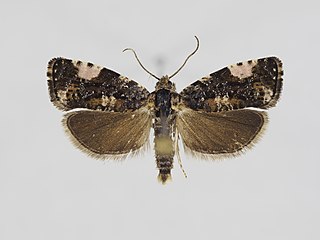
Northern Ireland is a part of the United Kingdom in the north-east of the island of Ireland that is variously described as a country, province or region. Northern Ireland shares an open border to the south and west with the Republic of Ireland. At the 2021 census, its population was 1,903,175, making up around 3% of the UK's population and 27% of the population on the island of Ireland. The Northern Ireland Assembly, established by the Northern Ireland Act 1998, holds responsibility for a range of devolved policy matters, while other areas are reserved for the UK Government. The government of Northern Ireland cooperates with the government of Ireland in several areas under the terms of the Belfast Agreement. The Republic of Ireland also has a consultative role on non-devolved governmental matters through the British–Irish Governmental Conference (BIIG).

The Troubles were an ethno-nationalist conflict in Northern Ireland that lasted for about 30 years from the late 1960s to 1998. Also known internationally as the Northern Ireland conflict, it began in the late 1960s and is usually deemed to have ended with the Good Friday Agreement of 1998. Although the Troubles mostly took place in Northern Ireland, at times violence spilled over into parts of the Republic of Ireland, England, and mainland Europe.

The United Kingdom of Great Britain and Northern Ireland, commonly known as the United Kingdom (UK) or Britain, is a country in Northwestern Europe, off the coast of the continental mainland. It comprises England, Scotland, Wales, and Northern Ireland. The UK includes the island of Great Britain, the north-eastern part of the island of Ireland, and most of the smaller islands within the British Isles, making up a total area of 94,354 square miles (244,376 km2). Northern Ireland shares a land border with the Republic of Ireland; otherwise, the United Kingdom is surrounded by the Atlantic Ocean, the North Sea, the English Channel, the Celtic Sea, and the Irish Sea. The United Kingdom had an estimated population of over 68.2 million people in 2023. The capital and largest city of both England and the United Kingdom is London, whose wider metropolitan area is the largest in Western Europe, with a population of 14.9 million. The cities of Edinburgh, Cardiff, and Belfast are the national capitals of Scotland, Wales, and Northern Ireland, respectively.

Since 1922, the United Kingdom has been made up of four countries: England, Scotland, Wales and Northern Ireland. The UK Prime Minister's website has used the phrase "countries within a country" to describe the United Kingdom.

Syricoris lacunana, the dark strawberry tortrix, is a small moth species of the family Tortricidae. It is found in the Palearctic realm.

Celypha rufana, the lakes marble, is a small moth species of the family Tortricidae, long known under the junior synonym C. rosaceana.

Argyroploce is a genus of moths belonging to the subfamily Olethreutinae of the family Tortricidae.

The Olethreutini are a tribe of tortrix moths.

Argyroploce arbutella is a moth of the family Tortricidae. It is found in most of Europe, from Fennoscandia and northern Russia to the Pyrenees, Sardinia, Italy and Bulgaria and from Ireland to Poland and Romania.

Argyroploce roseomaculana is a moth of the family Tortricidae. It was described by Gottlieb August Wilhelm Herrich-Schäffer in 1775. It is found from Scandinavia south to Italy and Romania and from Poland and the Czech Republic east to Russia.

Argyroploce noricana is a moth of the family Tortricidae. It was described by Gottlieb August Wilhelm Herrich-Schäffer in 1851. It is found from Scandinavia and northern Russia south to Italy and from France east to Bulgaria and Romania.

Argyroploce lediana is a moth of the family Tortricidae. It was described by Carl Linnaeus in 1758. It is found in Scandinavia, northern Russia, the Baltic region, Germany, Poland, the Czech Republic, Slovakia, Austria and Romania. In the east, the range extends to Japan.
"Argyroploce" percnochlaena is a species of moth of the family Tortricidae. It is found in the Democratic Republic of Congo.
Helictophanes dryocoma is a moth of the family Tortricidae first described by Edward Meyrick in 1916. It is found in Sri Lanka and India.

Argyroploce externa is a species of moth, belonging to the genus Argyroploce.

Argyroploce concretana is a species of moth belonging to the family Tortricidae.

Argyroploce chlorosaris is a species of moth in the family Tortricidae first described by Edward Meyrick in 1914. This species is endemic to New Zealand. The classification of this moth within the genus Argyroploce is regarded as unsatisfactory and in need of revision. As such this species is currently also known as Argyroploce (s.l.) chlorosaris.















